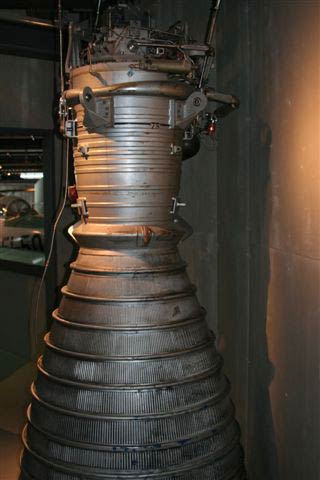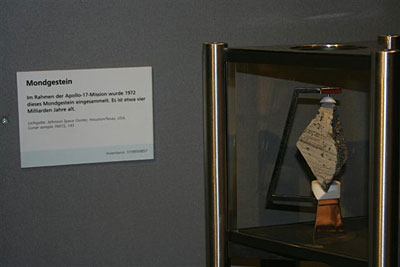|
|
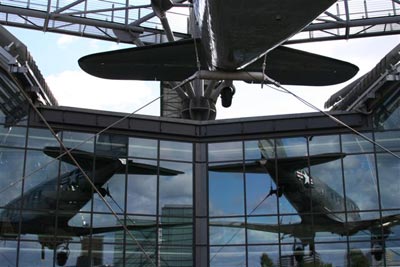 A C-47 aircraft is atop the German Technology Museum in Berlin. (credit: all photos © Dwayne Day) |
Raketen in Berlin
by Dwayne A. Day
Monday, March 3, 2008
Germany has a long history of science and technology leadership. But the country also has a history of warfare—although things have been relatively settled for the past six decades or so. The unique combination of both German technological leadership and warfare has affected Germany’s ability to showcase its technological achievements in numerous ways. Notably, the fact that the country was devastated by World War 2 as well as the loser in that conflict meant that many artifacts from Germany’s scientific and technological heritage were either destroyed or no longer reside in Germany. This is evident in their museums, which frequently contain fewer examples of their heritage than museums outside of Germany.
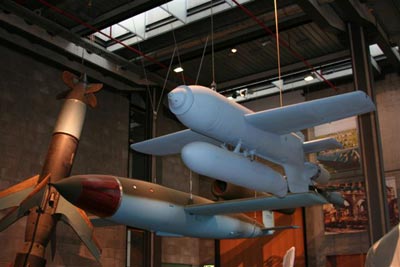 |
A good example of this is the German Technology Museum (Deutches Technisches Museum) in Berlin. Ever since the Berlin Wall was torn down the city has undergone a dramatic transformation, with the construction of many modern and architecturally interesting buildings. The Technology Museum (formerly the Museum of Transport and Technology), which resides in an old railroad service building, received a facelift with the addition of a new building to house a number of artifacts, including a top floor devoted to aircraft and spaceflight and topped with an American C-47 transport plane (the military version of the famed DC-3) that was so vital to keeping West Berlin alive during the Berlin Airlift. Despite the renovation, the museum features very few examples of Germany’s impressive rocket history.
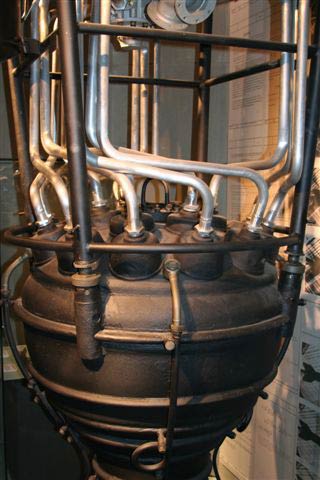 |
The first few floors of this new building, opened in 2003, are devoted to ships and maritime history. The top floor features a number of aircraft, although the collection is not particularly impressive, especially compared to some other German museums, such as the Speyer Museum of Technology south of Frankfurt, and the amazing Deutsches Museum in Munich. One of the Berlin museum’s recent acquisitions is wreckage from a Focke-Wolf Fw200 Condor four-engine reconnaissance and anti-shipping aircraft recovered from a lake. No Condors survived the war intact, and this one unfortunately came apart during a recovery operation.
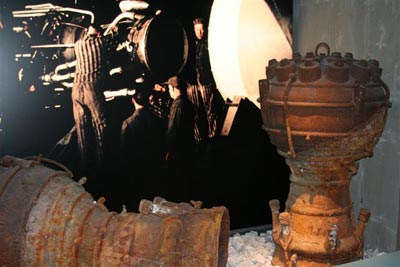 |
The rocket and space collection occupies one small wing of the top floor. Artifacts in the collection include a Moon rock collected during the Apollo 17 mission, V-2 rocket engines, and an American H-1 rocket engine from the Saturn I program. The collection also includes a number of smaller artifacts including anti-aircraft and anti-ship rockets that were also developed by the Germans during World War 2. The museum also has a new artifact that had not yet been unveiled as of September 2007. This is a Heinkel He-162 Volksjaeger jet-propelled aircraft designed for cheap production in the latter days of World War 2.
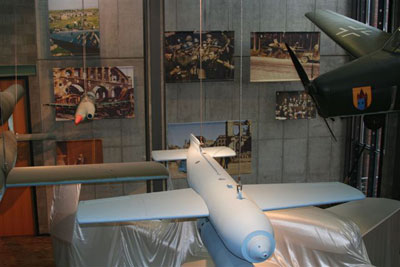 |
The descriptions and labeling on the rocket artifacts are relatively sparse, although this is true for many other artifacts in the museum as well and appears to be a stylistic choice rather than an editorial one. (Modern Germany at times can be too hip for its own good.) One wall of the missile and rockets display features photographs, including some depicting the slave labor used in the German rocket development program as well as the Nuremberg trials. Overall, the exhibit acknowledges the war, but provides relatively little information about it.
There are other museums in Germany that do a better job of explaining both the history and context of German rocket development, particularly the excellent museum in Peenemunde, in the northeast. But they are less easy to reach than Germany’s bustling, modern capital.
Dwayne Day can be reached at zirconic1@cox.net.
|
|




